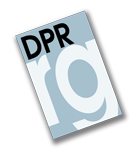El estatuto jurídico de los testigos exentos de concurrir y de declarar o de concurrir, pero no de declarar, de los arts. 411 a 415 y 702 y 703 LECRIM. (RI §420198)

The legal status of witnesses exempt from appearing in court and from testifying or from appearing in court, but not from testifying, of the Arts. 411 to 415 and 702 and 703 LECRIM -
Pablo García Molina
Este trabajo aborda el estatuto jurídico de los testigos exentos de concurrir y de declarar o de concurrir, pero no de declarar, de los arts. 411 a 415 y 702 y 703 LECrim. Este tema, al que la doctrina y la jurisprudencia no le han prestado demasiada atención a pesar de que se contempla en la LECrim. desde sus orígenes y de su deficiente regulación, ha cobrado protagonismo a raíz de la comparecencia como testigo de D. Mariano Rajoy Brey, Presidente del Gobierno, en la Audiencia Nacional por el “caso Gürtel”. Tomando este hecho como hilo conductor de este trabajo, en el mismo se analiza la regulación de estos privilegios procesales, proponiendo reformas a la luz de los proyectos non natos de LECrim. de 2011 y 2013 y de algunas regulaciones de otros países de nuestro entorno.
I. INTRODUCCIÓN, II. RÉGIMEN JURÍDICO DE LOS TESTIGOS “PRIVILEGIADOS”, 1. En la fase de instrucción, 1.1. Testigos que no tienen obligación de concurrir al llamamiento judicial ni de declarar, 1.2. Testigos que están exentos de concurrir al llamamiento del juez, pero no de declarar, pudiendo hacerlo por escrito u oralmente, 1.3. Testigos que están exentos de concurrir al llamamiento del juez, pero no de declarar, pudiendo hacerlo solo oralmente, 1.4. Características comunes de estos testigos privilegiados, 2. En el juicio oral, 2.1. La fecha de la declaración, 2.2. La modalidad de la declaración: presencial o por videoconferencia, 2.3. El lugar de la declaración, III. CONCLUSIONES.
This paper deals with the legal status of witnesses who are exempted from attending and from testifying or attending, but not from testifying, the arts. 411 to 415 and 702 and 703 LECrim. This issue, to which doctrine and jurisprudence have not paid much attention despite the fact that it is contemplated in the LECrim. Since its origins and its deficient regulation, it has gained prominence following the appearance as a witness of Mr. Mariano Rajoy Brey, President of the Government, in the National High Court for the "Gürtel case". Taking this fact as a guiding thread of this work, it analyzes the regulation of these procedural prerogatives, proposing reforms in the light of LECrim's non natos projects. 2011 and 2013 and some regulations from other countries around us.
I. INTRODUCTION, II. LEGAL REGIME OF THE "PRIVILEGED" WITNESSES, 1. In the pre-trial phase, 1.1. Witnesses who have no obligation to attend the judicial appear or to testify, 1.2. Witnesses who are exempt to attend to the judge's appear, but not to testify, and may do so in writing or orally, 1.3. Witnesses who are exempt to attend to the judge's appear, but not to testify, and may do so only orally, 1.4. Common characteristics of these privileged witnesses, 2. In the trial, 2.1. The date of the declaration, 2.2. The form of the declaration: face-to-face or by videoconference, 2.3. The place of testifying, III. CONCLUSIONS.

 DIRECTOR
DIRECTOR